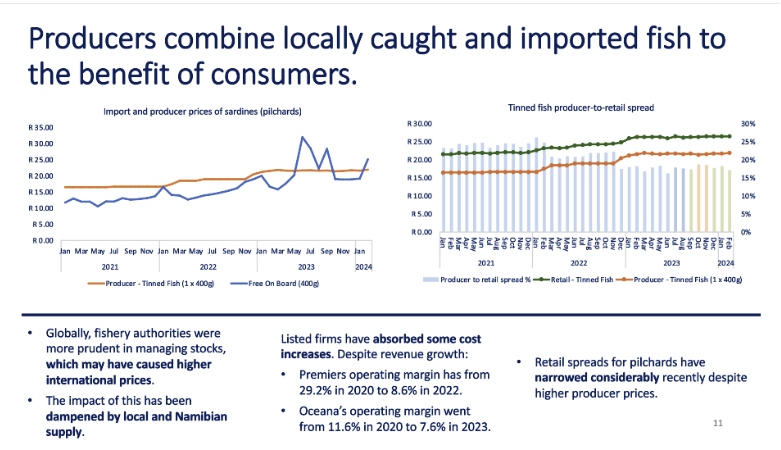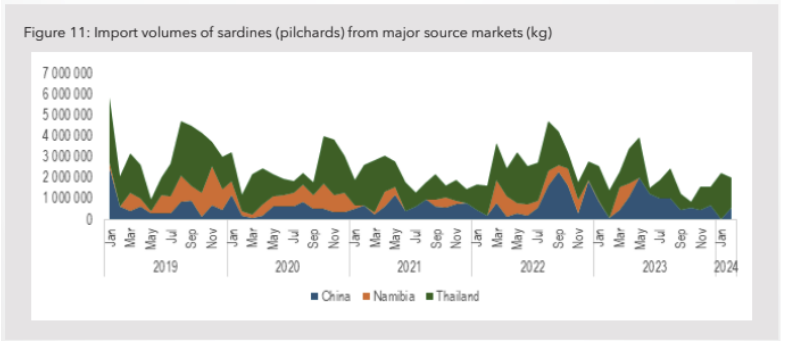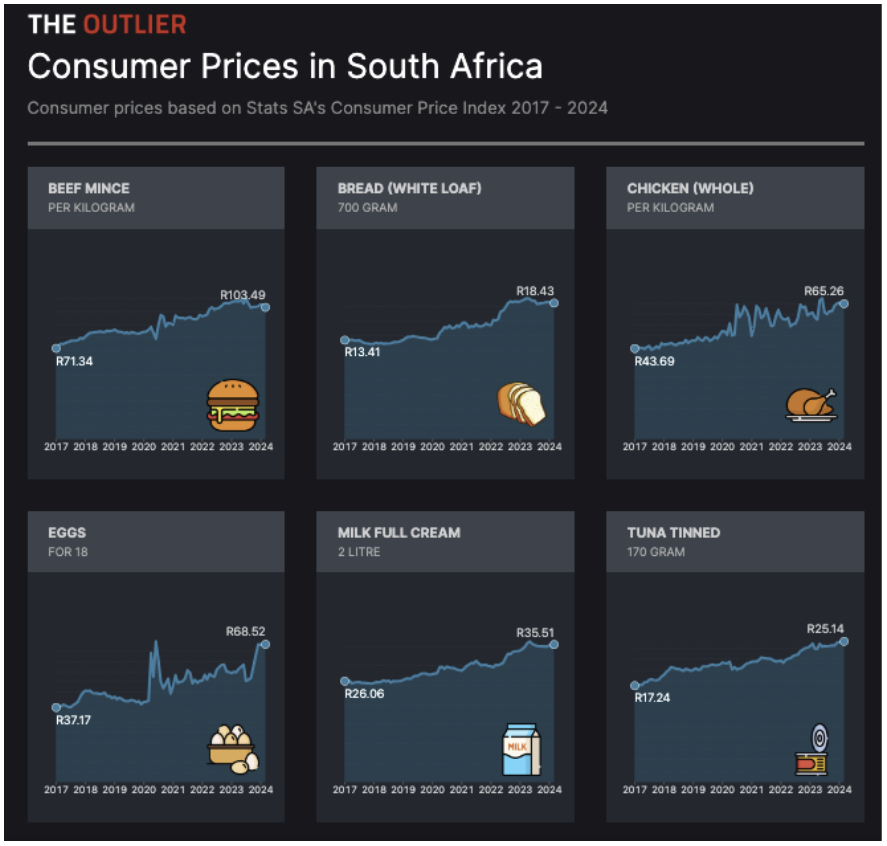In its latest Essential Food Pricing Monitoring Report, released on Monday, the Competition Commission said costs across food value chains were beginning to settle, thanks in part to retailers absorbing some of the price pressure. That’s despite the impact of rolling blackouts, the deteriorating rail and port situation, the avian flu outbreak in April 2023 and global shipping disruptions caused by the conflict in the Red Sea.
For this report, the commission used an early warning system developed by Consumers International, with technical support from the Bureau for Food and Agricultural Policy, alongside its usual monitoring data for the past six months.
The early warning system compares a spread of food prices over time, at different points in the value chain, as a high-level indicator rather than a tool to determine profit-taking behaviour of firms in the value chain. The spread is calculated as the percentage difference between the producer price of goods and the retail price.
However, while lower food inflation is a positive sign, the commission said food prices were still rising at a rate which could threaten food security and that cost pressures — due to the energy crisis, transport expenses, and the impact of the drought — were likely to continue. This will see consumers continuing to economise by buying cheaper alternatives, such as canned pilchards, which are increasingly becoming a staple protein, despite the price of canned fish rising in recent months because of reduced local and Namibian supplies and higher producer prices.

The commission said the effects of the avian flu outbreak were beginning to diminish, with egg prices returning to normal.
There’s been a steep reduction in the price of sunflower seed, which is starting to filter down to the consumer. As of January, the spread was elevated but was coming down, the report said, due to a sharp reduction in producer prices. Unless there are any further shocks “or opportunistic behaviour”, consumers can expect to see lower producer prices soon.
The retail spread for brown bread has remained relatively stable, despite the highest level seen in July 2023 of 21% producer-to-retail spread.
The retail spread of the price of individually quick frozen (IQF) chicken decreased from 52% in January 2021 to 36% in November 2023, heavily affected by the avian flu outbreak. The commission said lower increases in retail prices reflected the effect of imports in the SA market.
 Food security: the 10 biggest threats to the UK’s food and drink supply chain
Food security: the 10 biggest threats to the UK’s food and drink supply chain
Maize meal spreads are volatile throughout the value chain, which adds pressure on the producer and retail price.
Chicken is still South Africa’s favoured protein source, but canned pilchards are becoming increasingly popular as consumers tighten their belts. Citing the latest sales figures of the listed canned pilchard producers such as Lucky Star owner Oceana, and Premier Fishing, the commission said Lucky Star sales volumes grew by 9% across local and export markets (going from 8.8 million cartons in FY2022 to 9.6 million in FY2023) while Premier grew its sales of pilchards by 59% (from 1,174 tonnes in FY2021 to 1,866 tonnes in FY 2022).

Relative to other proteins, canned pilchards are not the most affordable source of protein, as each gram of protein cost R1.12 in December 2023. The most affordable protein is dry beans (R0.32 per protein gram), followed by eggs (R0.48 per protein gram) and IQF chicken (R0.91 per protein gram). Beef is the most expensive source of protein (R2.81 per protein gram).
The increase in the popularity of canned pilchards is therefore not ascribed to its protein value, but rather to a combination of factors: they are zero-rated for VAT, easily stored, shelf-stable, are available in smaller pack sizes and have a wide flavour range.
The Pietermaritzburg Household Affordability Index for April this year, which tracks the prices of 44 basic foods from 47 supermarkets and 32 butcheries across SA, shows that the average cost of the Household Food Basket in April was R5,336.31, having increased by R58.38 (1.1%), from R5,277.93 in March. Year-on-year, the basket was up by R312.36 (6.2%), from R5,023.95 in April 2023 to R5,336.31 in April 2024.
Much of that increase was due to higher vegetable prices, particularly onions, sugar beans, onions, tomatoes, carrots, spinach and green pepper. Other foods increased in price last month by 2% or more, including white sugar (2%), maas (2%), chicken livers (2%), beef liver (2%), beef tripe (2%), cabbage (4%), tinned pilchards (3%), bananas (4%), peanut butter (2%), apricot jam (3%), and brown bread (2%).
















